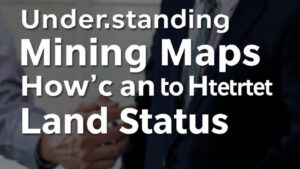Understanding the Use of Geophysical Mapping for Vein Structure Identification
Understanding the Use of Geophysical Mapping for Vein Structure Identification
Geophysical mapping has emerged as a cornerstone technique in the identification and exploration of vein structures, particularly in the fields of mining, geology, and environmental science. This article aims to explore the methodologies, applications, and benefits of geophysical mapping, highlighting its significance in uncovering geological structures, particularly mineral veins.
What is Geophysical Mapping?
Geophysical mapping involves the use of various geophysical methods to obtain subsurface information through the measurement of physical characteristics of the earth. Techniques such as seismic surveying, magnetic, electrical, and gravity methods are commonly deployed to analyze geological structures.
Common Methods of Geophysical Mapping
Several key methods are employed in geophysical mapping for vein identification:
- Seismic Surveying: This technique utilizes seismic waves generated by artificial or natural sources to identify geological structures. By analyzing the time it takes for these waves to return, geophysicists can infer the presence and characteristics of subsurface materials.
- Magnetometry: Magnetometric surveys measure variations in the Earths magnetic field caused by the presence of different rock types. Changes in magnetic susceptibility can indicate the location of mineral veins, especially those containing magnetic minerals like pyrrhotite.
- Electrical Resistivity Tomography (ERT): This technique involves measuring the electrical resistance of the ground to identify water saturation and mineral content. Veins often exhibit contrasting electrical properties compared to surrounding rock, making ERT a powerful tool for their detection.
- Ground-Penetrating Radar (GPR): GPR employs radar pulses to image the subsurface. This non-invasive technique is particularly effective in identifying shallow vein structures.
Case Studies and Real-World Applications
Numerous case studies exemplify the successful application of geophysical mapping techniques in vein structure identification:
- McArthur River Uranium Mine, Canada: In the exploration of this mine, a combination of magnetometry and gravity surveys was employed to locate uranium-rich veins. The integration of geophysical data reduced exploration costs and time while enhancing the accuracy of drilling locations.
- Pinto Valley Mine, Arizona, USA: Seismic surveys combined with ERT were used to identify the orientation and continuity of copper-bearing veins, significantly improving ore recovery rates and mine planning.
Benefits of Geophysical Mapping for Vein Identification
The advantages of utilizing geophysical mapping techniques for vein structure identification are multifaceted:
- Cost-Effectiveness: Geophysical methods provide valuable subsurface information without the need for extensive drilling, which can be expensive and time-consuming.
- Enhanced Safety: Reduced drilling means lower exposure to hazardous conditions in unexplored regions.
- Increased Accuracy: The ability to map the extent and orientation of veins helps in precise planning and reduces uncertainty in resource estimation.
Challenges and Limitations
Despite its numerous advantages, geophysical mapping is not without challenges:
- Data Interpretation: The ambiguity in geophysical data can lead to varying interpretations, requiring skilled geophysicists to analyze results accurately.
- Depth Limitations: Certain methods may not effectively penetrate deeper geological structures, limiting their applicability depending on the geology of the area.
- Environmental Considerations: Some geophysical surveys may disrupt local ecosystems, necessitating careful planning and environmental assessments.
Conclusion and Future Directions
To wrap up, geophysical mapping is an invaluable asset in the identification of vein structures, offering a suite of techniques that enhance resource exploration while minimizing costs and risks. As technology advances, so too does the potential for more precise and non-invasive methods, paving the way for more effective mining practices and better environmental stewardship.
Actionable Takeaways:
- Employ a multi-method approach for comprehensive geological assessments.
- Invest in training for geophysicists to improve data interpretation skills.
- Prioritize environmental impact assessments when planning geophysical surveys.

